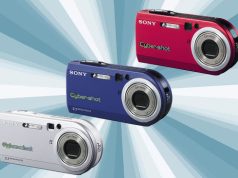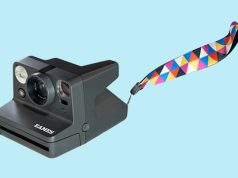
We are so proud that this issue of Digital Imaging Reporter presents our coveted 15th Rudy Awards! Despite the difficult past year, with both personal and economic hardships, the photo-imaging industry showed its resilience. It continued onward with an unstoppable rollout of amazing equipment.
The Rudy Awards were inspired by the late, unforgettable Rudolf Maschke. Rudy cofounded Photo Industry Reporter (Digital Imaging Reporter) with his lifelong business partner, Ed Wagner, in 1992. The Great Maschke, as he would often call himself, was a pioneer publisher in the photo-imaging industry going back to its infancy in the U.S. in the early 1960s. Rudy always had his finger on the pulse of emerging trends and innovations. Moreover, his passion for our industry was well evident on the pages of this magazine.
It is in this spirit that we honor Rudy and again celebrate the outstanding advances in photography and videography throughout the years. Following are our editors’ selections for the 15th Rudy Awards.
15th Rudy Award Honorees
Nikon Z 7II Full-Frame Mirrorless Camera
Nikon’s next-generation full-frame Z 7II ticks all the boxes with more power and more features than its groundbreaking predecessor. The ultrahigh-res ILC offers pros as well as advanced photographers immense resolution. At its heart are dual Expeed 6 processors that turbocharge its processing and still burst capability—plus boost power efficiency. Moreover, its 45.7MP BSI CMOS sensor captures ultra-shallow depth of field and incredible detail. In addition, its native ISO 64–25,600 range offers the freedom to shoot at wide apertures in bright light with minimal noise. The camera also boasts 10-fps, full-res shooting and more than triple the buffer capacity of the Z 7.

Notable is an enhanced autofocus system enabling quick focus acquisition and subject tracking; 493 on-sensor phase-detection AF points cover 90% of the frame. It also acquires focus in half the light (-3 EV). Eye- and face-detection AF are also available, to avoid focusing on distracting elements.
Moreover, the Z 7II is Nikon’s first camera to support eye-detection AF and animal-detection AF when video recording. And in-camera vibration reduction provides 5-stop camera-shake compensation. Also expanding 4K UHD video capabilities, the camera achieves an increased frame rate of 4K (UHD) 60p. And for added postproduction flexibility, 10-bit N-Log and HDR (HLG) output offer more detail, dynamic range and contrast. Another improvement is the addition of dual memory card slots; one CFexpress (Type-B)/XQD and one SD slot (UHS-II). $2,999.95.
GoPro Hero9 Black Action Cam
A CES 2021 Innovation Awards honoree, the Hero9 Black gives GoPro shooters more of everything they’re looking for in an action cam. It has a new sensor that delivers 5K video and 20MP photos; next-gen HyperSmooth 3.0 video stabilization with in-camera horizon leveling; a front-facing display as well as a larger rear display; 30% more battery life; and improved cold weather performance.
Waterproof to 33 feet, the camera debuted with the Max Lens Mod accessory. The accessory brings Max HyperSmooth video stabilization and Max SuperView ultrawide-angle photos/video to the Hero9 Black. Additionally, the sensor enables 5K 30p, 4K 60p, 2.7K 120p, 1440 120p and 1080 240p video recording. It also captures 20MP photos and RAW files. Its 1.4-inch front color display provides live preview and status modes, while a larger 2.27-inch rear display boasts touch zoom capability.
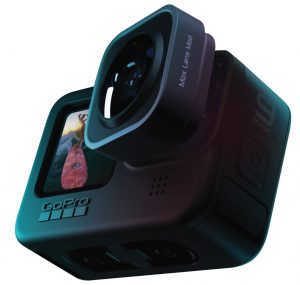
Other key features include TimeWarp 3.0 with Real Speed and Half Speed; 1080p livestreaming; and a 1080p webcam mode. Power tools comprise HindSight, LiveBurst, Scheduled Capture and Duration Capture, as well as SuperPhoto + HDR Night lapse mode. If that isn’t enough, the Hero9 Black has digital lenses; voice control with 14 commands in 11 languages and six accents; three microphones with advanced wind-noise reduction; and stereo + RAW audio as well as a larger speaker for improved audio playback. The camera comes with a lens cover; a rechargeable battery; and built-in folding mounting fingers. $449.99.
Sigma 24mm f/3.5 DG DN Contemporary I Lens
Sigma’s new I series line of four premium, compact prime lenses for full-frame mirrorless cameras includes the 24mm f/3.5 DG DN | Contemporary. In L and E mounts, these advanced lenses have similar mechanical and operational standards as Sigma Cine lenses, but in a compact mirrorless form. They feature all-aluminum exteriors, precision metal internal parts, a metal lens hood, magnetic lens caps, and durable splashproof brass bayonet mounts. They also integrate a manual aperture ring and knurled surfaces for a tactile experience. The E-mount versions support DMF, AF+MF; the L-mount lenses support the optional Sigma UD-11 USB dock.

The 24mm wide-angle lens boasts a very compact design, weighing just 7.9 ounces, yet captures the finest details from full-frame cameras. With a 4.3-inch minimum focus distance and a 1:2 maximum reproduction ratio, it allows photographers to shoot without worrying about the distance to the subject. And its high resolving power produces edge-to-edge sharpness at all apertures. In addition to attractive bokeh, it creates near-circular out-of-focus highlights, even at the edges, to capture a close-up image of an in-focus subject with a pleasingly blurred background.
Its optical construction includes high-precision, glass-molded aspherical, super-low dispersion and high refractive index glass elements. A smooth focus drive complements a quiet, fast stepping motor, making it a great option for video. Other features include compatibility with lens-based optical correction; Super Multilayer coating to minimize flare/ghosting; a focus mode switch; an inner focus design; and a 7-blade rounded diaphragm. $549.
Sony Alpha 1 Full-Frame Pro Mirrorless
Sony pulled out all the stops with its Alpha 1. The mirrorless camera combines high resolution and high speed via a 50.1MP full-frame stacked Exmor RS sensor and upgraded Bionz XR processor. An Alpha first, it records 8K 30p 10-bit 4:2:0 XAVC HS video with 8.6K oversampling. It also offers in-camera 4K recording at up to 120 fps. Plus it supports high-quality All-I intra-frame compression; S-Cinetone, the color matrix that produces the FX9/FX6 color and skin tones; S-Log3 gamma for 15+ stops of dynamic range (video); and S-Gamut3.Cine color settings to match footage from pro cinema cameras.
Remarkably, the ILC shoots 50.1MP images at 30 fps with 120 AF/AE calculations per sec. It boasts a 0.033-sec AE response latency, while a large buffer enables capturing 155 full-frame compressed RAW images at 30 fps with AF/AE tracking. It also supports the HEIF (High Efficiency Image File) format for 10-bit gradations.

A 9.44M-dot EVF features a 240-fps refresh rate; no black out; and 0.90x magnification. Additionally, a 3-inch, 1.44M-dot LCD has a touch-responsive menu with touch focus and tracking. Sony incorporated 759 phase-detection points in a focal plane PDAF system that covers 92% of the image. Real-time eye AF for humans/animals was improve 30%, while real-time eye AF for birds was added. Other video niceties include a 5.5-step shutter speed advantage; active mode for stable handheld video; 16-bit RAW output to an external recorder; an HDMI Type-A connector; and a digital audio interface.
What’s more, the Alpha 1 has transfer features too numerous to list. Highlights include 5GHz wireless LAN with dual antennas; 2×2 MIMO for 3.5x faster wireless FTP transfer; a USB Type-C connector; high-speed PC Remote (tethered) transfer; a 1000BASE-T LAN connector; FTPS with encryption; and UHS-I/UHS-II SDXC/SDHC and CFexpress slots. $6,500.
Canon PowerShot Zoom Telephoto Monocular
Here’s a truly unique honoree. To showcase an impressive telephoto reach in a user-friendly, compact design, Canon’s PowerShot Zoom is the company’s first telephoto monocular. The lightweight monocular offers 100mm, 400mm as well as a whopping 800mm telephoto viewing capability with a one-touch switch. Its instant zoom function helps users easily view distant subjects, and the monocular captures images/videos to a microSD card. By pairing the monocular with a smart device and the Canon Camera Connect app, users can download its files. This pairing also transforms the monocular into a smartphone companion for viewing and capturing super-telephoto scenes.
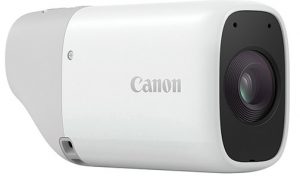
The PowerShot Zoom telephoto monocular enables autofocus when viewing through its 0.39-inch, 2.36M-dot electronic viewfinder. It also permits recording images and video with face tracking. The device employs optical image stabilization for shake correction for 12MP still image capture and Full HD 30p video recording. Other features include Wi-Fi and Bluetooth connectivity with the Canon Camera Connect app; live view; a USB-C terminal for charging and supplying power; and a microSD card slot. $299.99.
Panasonic Lumix G100 Vlogger ILC
Keeping up with social media trends, the 20.3MP mirrorless Lumix G100 is squarely aimed at vloggers and online content creators who want to up their game. With intuitive controls and excellent sound quality, its usability is enhanced by a compact, lightweight body. “The Lumix G100 uses a smartphone-crushing Four Thirds sensor that records smooth, high-resolution QFHD 4K videos in 3,840×2,160 resolution at 30p or 24p in MP4 and Full HD at 60p,” says Panasonic.
What’s more, five-axis hybrid IS provides shake suppression for stable video when walking or in a moving vehicle. A video selfie mode captures both the videographer and background in focus without aperture adjustments. The G100 also has a static-type touch control system and a 3-inch, 1.84M-dot, free-angle monitor to compose selfies and capture high/low-angle shots. Also, the rec frame indicator displays a noticeable red frame.

Notably, the ILC boasts OZO Audio by Nokia for high-quality spatial audio recording and universal shareability across social media. Three microphones record clear sound with images. A tracking feature tracks the voice of the subject; auto mode automatically switches for the best setting between tracking and surround modes.
Other features include a max ISO 25,600; 4x/2x slow, 8x/4x/2x quick FHD motion and time-lapse capture; V-LogL; a 3.68M-dot viewfinder; Bluetooth 4.2; Wi-Fi 2.4GHz; an upload button; and HDMI output. With 12–32mm f/3.5–5.6 Asph lens, $749.99.
Lensbaby Spark 2.0 Special Effects Lens
This is Lensbaby’s latest adaptation of its Spark special effects lens and the first flexible Lensbaby for mirrorless cameras. Photographers can use Spark 2.0 in new creative ways by bending it to capture unique perspectives. Drawing on the design of the Original Lensbaby first introduced in 2004, the Spark 2.0 combines the original’s dance-like process of focusing and tilting with internally adjustable apertures.
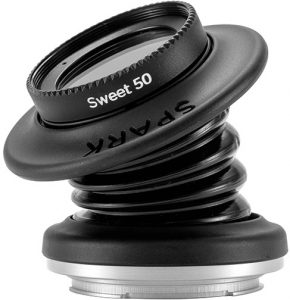
Moreover, it is compatible with any of the 15 Optic Swap optics that Lensbaby has introduced since 2008. Featuring a squeeze-to-focus interface, it enables users, new or experienced, to leverage Lensbaby’s artistic process of focusing and tilting that moves with the subject. Users can control the size of the sweet spot of focus by physically bending the lens into a range of angles. In addition, they can place the spot of focus anywhere in the frame to create extraordinary bokeh while showcasing the subject in sharp focus.
Upgrades to the Spark 1.0, introduced in 2012, include a 12-blade adjustable aperture with settings of f/2.5–22 and metal camera mounts for most interchangeable-lens systems. A terrific option for capturing portraits, still lifes and nature scenes, the 50mm Spark 2.0 is available in Canon EF and RF, Fujifilm X, Micro Four Thirds, Nikon F and Z, Sony E and Pentax K mounts. $199.95.
Zeiss ZX1 Full-Frame Point-and-Shoot Camera
The ZX1 compact P&S blends the superior image quality of a Zeiss full-frame camera with the mobile experience and intuitive use of smartphones for photography. It boasts an integrated Zeiss Distagon 35mm f/2 T* AF lens mated to a 37.4MP full-frame Zeiss sensor. Its imagery features the “Zeiss” look—characterized by definition, natural colors and a 3D effect. In addition, it has a virtually silent shutter.
A large, 4.3-inch multi-touch display lets photographers edit images using the built-in Adobe Photoshop Lightroom app. They can edit RAW images with tools, sliders and presets. The ZX1 comes with a free one-year Lightroom subscription and 1TB of cloud storage.
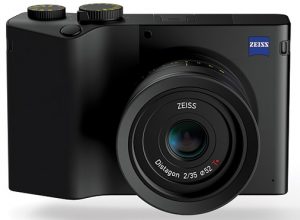
Moreover, its interface provides direct access to frequently used functions via the display. And thanks to the display’s distinctive bend, the camera fits comfortably in hand. In addition, photographers can upload images to the cloud or social media, without transferring them to memory cards or external devices. Other features include 512GB of internal memory (7,000 RAW files or 50,000 JPGs); multifunctional interfaces such as Wi-Fi, Bluetooth and USB-C; and the ability to update the camera’s software wirelessly. $6,000.
Kodak Moments To Go Touch-Free Photo Kiosk
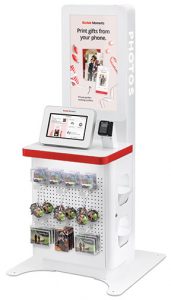
The Kodak Moments To Go kiosk is a self-service photo printing station fully managed by Kodak Moments. Coupled with the company’s latest touch-free photo printing technology, the solution provides retailers a low-risk, affordable way to offer photo printing to consumers.
Via the Kodak Moments To Go station, consumers can use their mobile devices to shop and create photo print orders from anywhere. Once they have ordered, consumers can safely pick up and pay for their photos from the kiosk during their next shopping trip—touch-free. In addition, the solution allows users to create a variety of value-added photo products directly at the kiosk.
For retailers looking to expand their experiential offerings and drive value, Kodak Moments owns and operates the equipment. The company manages marketing, replenishment and service. The goal is to provide a contactless, labor-free, self-service solution that includes payment. By providing a small footprint location and power, retailers receive a revenue share from sales generated by the kiosk.
Olympus M.Zuiko Digital ED 150–400mm f/4.5 TC1.25x IS Pro
Olympus went to the far reaches when they developed this super-telephoto zoom lens with all-weather performance. Featuring a built-in 1.25x teleconverter, it covers a 300–1000mm-equivalent focal length yet weighs 4.1 pounds and is 12.4 inches long. Notably, for tripod-free shooting, 5-axis sync IS provides 8 shutter speed steps of compensation (300mm equivalent). Further, via its built-in teleconverter, the lens achieves 1000mm-equivalent handheld super-telephoto shooting while delivering 6 shutter steps of IS. Paired with the optional MC-20 teleconverter, it’s capable of 2000mm-equivalent shooting.
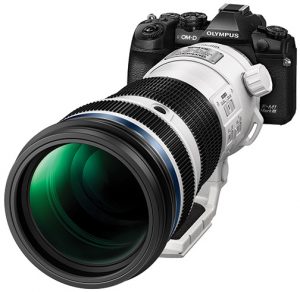
A 28-element, 18-group design includes a large-diameter extra-low dispersion aspherical lens and four super ED lenses to reduce flare and color bleeding. Olympus Z Coating Nano suppresses reflective light. For tele macro shooting, it has a 4.27-foot focusing distance, while a 0.57x maximum magnification increases to 0.71x when using the built-in teleconverter.
Other features include an inner zoom system to maintain its original length; a rubberized zoom/focusing ring; preset focus function recall; a tripod plate; strap eyelets to improve portability as well as to reduce load on the mount; a rubber lens cover; and also a fluorine coating. What’s more, its barrel is made of magnesium alloy, and the hood comprises lightweight carbon fiber to ensure the center of gravity doesn’t shift. A heat-resistant coating reflects the sun’s infrared rays. $7,499.99.
DJI Mini 2 Ultralight Drone
Sporting DJI’s iconic folding design, this small drone weighs less than 249 grams yet boasts advanced imaging capabilities: a 1/2.3-inch sensor captures 12MP images (JPEG/RAW) and 4K/30 fps video. While recording in 1080p, pilots can utilize the 4x zoom (2x lossless). Preprogrammed intelligent modes capture footage with set movements, while beginner tutorials and simplified buttons aid new pilots.
OcuSync 2.0 transmission now ensures a stable, long-distance connection between the remote controller and the Mini 2. Moreover, dual-frequency technology automatically combats interference. And its transmission range of six+ miles is a 150% increase! Plus, upgraded motors provide 31 minutes of flight and faster acceleration. They also withstand 24 mph winds. What’s more, a 3-axis gimbal compensates for movement/wind.

A live feed to a smartphone lets pilots see where the drone is and what it sees. Positioning/vision sensors help the drone hover precisely in place, and GPS tracks it while vision sensors map out the ground for automated landing. And GEO fencing keeps it out of restricted areas. There’s also a return-to-home function.
The Mini 2 offers various photo modes; AEB Triple Shot uses autoexposure bracketing to take three images of varying exposures and merges them for a vivid image. Users can also edit images to create HDR photos in post-processing and trim videos before downloading. $449.
Tamron 17–70mm f/2.8 Di III-A VC RXD Lens
This is Tamron’s first high-speed zoom lens for E-mount mirrorless cameras with APS-C-size sensors. It features an f/2.8 maximum aperture across its entire 4.1x zoom ratio and covers a 25.5–105mm full-frame-equivalent focal length. The small, lightweight lens is also compatible with functions that Sony builds into its mirrorless ILCs, including Fast Hybrid AF technology and eye AF.
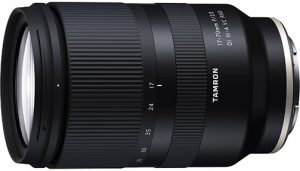
Its optical construction uses 16 elements in 12 groups. Two GM (glass molded aspherical) lens elements and one hybrid aspherical lens element are precisely arranged to maintain high-resolution from edge to edge. Additionally, it employs Tamron’s upgraded VC (vibration compensation) mechanism to minimize the effects of camera shake. Sophisticated algorithms optimized for this model as well as a dedicated, independently operating MPU combine to compensate for vibration. Markedly, this feature is available when the lens is used with cameras with or without in-body IS. And when shooting video, AI technology improves image stabilization.
The lens focuses close—down to 7.5 inches. Plus, the 15.4-inch MOD at the 70mm telephoto end ensures close-range shooting performance to create compelling close-ups. Despite its robust feature set, the lens measures 4.7 inches and weighs 18.5 ounces. It also maintains the same Ø67mm filter size of Tamron’s mirrorless lens lineup. Other features are a quiet RXD (Rapid eXtra-silent stepping Drive) stepping motor perfect for video recording; a rounded 9-blade aperture; moisture-resistant construction; and a protective fluorine coating. $799.


